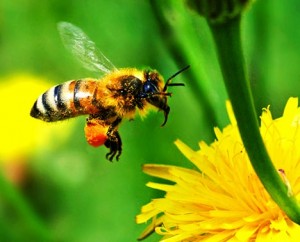 The genus Apis comprises four species:
Apis florea,
the Little Honeybee,
Apis dorsata
, the Giant Honeybee,
Apis cerana
, the Eastern Honeybee and
Apis mellifera
, the Western Honeybee. Some writers also include
Apis laboriosa
and
Apis andreniformis
as separate species, but it is likely that these are geographical subspecies of
Apis dorsata
and
Apis florea
respectively, although they do show greater physical variations than the other subspecies and in fact are possibly in a more advanced stage of species development.
The genus Apis comprises four species:
Apis florea,
the Little Honeybee,
Apis dorsata
, the Giant Honeybee,
Apis cerana
, the Eastern Honeybee and
Apis mellifera
, the Western Honeybee. Some writers also include
Apis laboriosa
and
Apis andreniformis
as separate species, but it is likely that these are geographical subspecies of
Apis dorsata
and
Apis florea
respectively, although they do show greater physical variations than the other subspecies and in fact are possibly in a more advanced stage of species development.
It is thought that bees originally evolved from hunting wasps which acquired a taste for nectar and decided to become vegetarians. Fossil evidence is sparse but bees probably appeared on the planet about the same time as flowering plants in the Cretaceous period, 146 to 74 million years ago. The precursor of the honeybees may have been living about this time, but fossils of the true Apis type have been discovered dating back to 22 to 25 million years ago in what is now Western Germany. A bee resembling Apis dorsata but much smaller, about the size of a present day Apis mellifera is known to have beeen alive about 12 million years ago.
It is believed that Apis florea and Apis dorsata may have existed as separate species as early as 34 million to 23 million years ago. It has not yet been possible however to estimate when bees of’ the Apis mellifera/cerana type first appeared on Earth. But they must have acquired separate identities at least 2 milllion years ago. The two species appear to have been physically separated at the time of the last Ice Age and there was no subsequent contact between them until brought together by human intervention in recent times. In the post-glacial period Mellifera and Cerana and to a less extent Dorsata and Florea, have shown similar evolution into distinct geographical subspecies or races.
Read more about Honey Bee Evolution up to the Present Time

